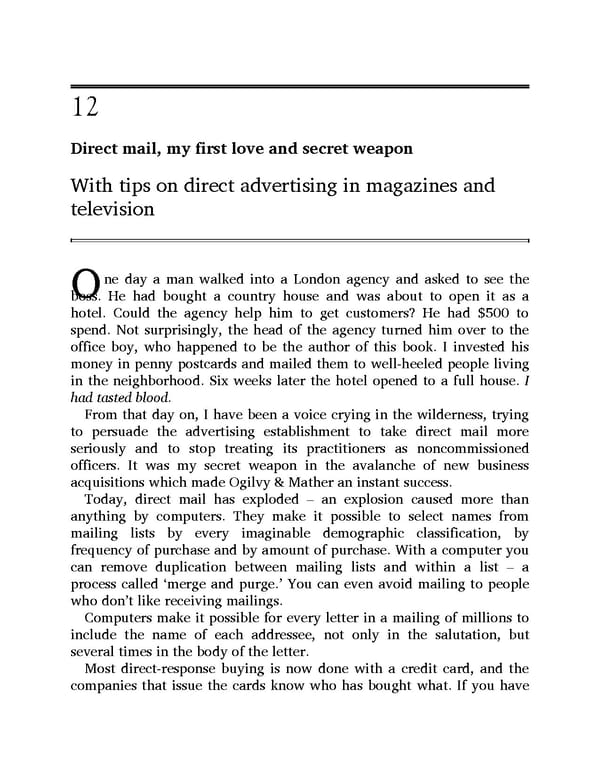1 2 Direct mail, my first love and secret weapon With tips on direct advertising in magazines and television ne day a man walked into a London agency and asked to see the O boss. He had bought a country house and was about to open it as a hotel. Could the agency help him to get customers? He had $500 to spend. Not surprisingly, the head of the agency turned him over to the office boy, who happened to be the author of this book. I invested his money in penny postcards and mailed them to well-heeled people living in the neighborhood. Six weeks later the hotel opened to a full house. I had tasted blood. From that day on, I have been a voice crying in the wilderness, trying to persuade the advertising establishment to take direct mail more seriously and to stop treating its practitioners as noncommissioned officers. It was my secret weapon in the avalanche of new business acquisitions which made Ogilvy & Mather an instant success. Today, direct mail has exploded – an explosion caused more than anything by computers. They make it possible to select names from mailing lists by every imaginable demographic classification, by frequency of purchase and by amount of purchase. With a computer you can remove duplication between mailing lists and within a list – a process called ‘merge and purge.’ You can even avoid mailing to people who don’t like receiving mailings. Computers make it possible for every letter in a mailing of millions to include the name of each addressee, not only in the salutation, but several times in the body of the letter. Most direct-response buying is now done with a credit card, and the companies that issue the cards know who has bought what. If you have
 Ogilvy on Advertising Page 204 Page 206
Ogilvy on Advertising Page 204 Page 206